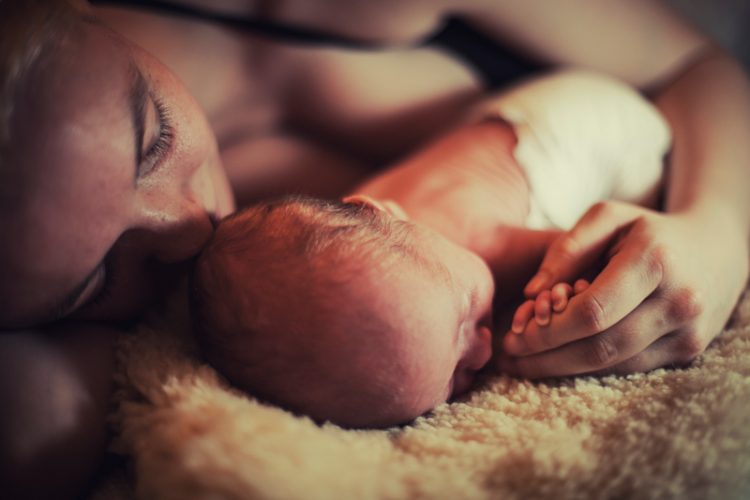High disease load reduces mortality of children

Protection through pathogens: children conceived by parents that carry pathogens during the time of conception are more resistant against other illnesses later in life. © Photocase
Children who have been conceived during a severe epidemic are more resistant against other pathogens later in life. For the first time this has been proved by researchers at the Max Planck Institute for Demographic Research (MPIDR) in Rostock, Germany, for the 18th century epidemics of measles and smallpox in the Canadian province of Québec.
Children who were conceived during the wave of measles in 1714 and 1715 died significantly less often from smallpox 15 years later than children who had been conceived before the measles epidemic.
This is the result of a study published in the scientific journal PLOS ONE by Max Planck researcher Kai Willführ and Mikko Myrskylä from the London School of Economics and Political Science. “We have proved that parents can essentially prepare their children for future diseases,” says bio-demographer Willführ.
“The underlying mechanism is not purely genetic, nor is the children’s resistance restricted to single pathogens.” Scientists call such a transfer a “functional trans-generational effect.” Parents who faced an increased disease load during conception not only gave their children protection against this one infection, but the defense against pathogens apparently also worked better in the next generation against different illnesses like smallpox.
The moment of conception was critical for life or death for many children during the 1730 smallpox epidemic. The probability of dying from smallpox had dropped to less than 15 percent for children conceived during the measles epidemic in 1714 and 1715 compared to their brothers or sisters who had been conceived and born before the measles epidemic.
But there was a high price to pay. Those children who were so resistant to smallpox survived the later epidemic with greater probability. But during the time between the two waves of epidemics, their mortality was three times that of their siblings who had been conceived before the earlier measles epidemic and thus were less resistant to smallpox.
“The way children’s bodies fight diseases seems to be optimized for a world with high pathogen load if it was also high at conception,” says MPIDR researcher Kai Willführ. But the children’s resistance does not fit into a world with fewer pathogens and works less well under normal circumstances.
“It was only during conception and pregnancy that measles could have given an advantage that parents passed on to the next generation,” says Kai Willführ. When the children conceived at the peak of the measles epidemic were born, the measles epidemic had already passed; the pathogens were no longer in the environment.
It can be ruled out that children simply became immune. In principle it is possible for a mother to pass her antibodies, and thus immunity, to her baby. This happens through the placenta during pregnancy and through breast milk after birth. But this protection is limited to the same illness the mother had immunity against. In Québec this would have been measles. However, in this study the researchers found that the children were also resistant against another disease, namely smallpox.
For the first time, the scientists could separate the mortality effects of the different diseases, because they traced the life course of each child individually and of their siblings. For their study they investigated birth cohorts from 1705 to 1724 and their mortality until the year 1740. They achieved data about births and deaths from transcriptions of old church registers of the historical population of the St. Lawrence River valley in the Canadian province of Québec.
Contact
Media Contact
More Information:
http://www.mpg.de/8133560/Infection_BirthAll latest news from the category: Social Sciences
This area deals with the latest developments in the field of empirical and theoretical research as it relates to the structure and function of institutes and systems, their social interdependence and how such systems interact with individual behavior processes.
innovations-report offers informative reports and articles related to the social sciences field including demographic developments, family and career issues, geriatric research, conflict research, generational studies and criminology research.
Newest articles

Webb captures top of iconic horsehead nebula in unprecedented detail
NASA’s James Webb Space Telescope has captured the sharpest infrared images to date of a zoomed-in portion of one of the most distinctive objects in our skies, the Horsehead Nebula….

Cost-effective, high-capacity, and cyclable lithium-ion battery cathodes
Charge-recharge cycling of lithium-superrich iron oxide, a cost-effective and high-capacity cathode for new-generation lithium-ion batteries, can be greatly improved by doping with readily available mineral elements. The energy capacity and…

Novel genetic plant regeneration approach
…without the application of phytohormones. Researchers develop a novel plant regeneration approach by modulating the expression of genes that control plant cell differentiation. For ages now, plants have been the…





















